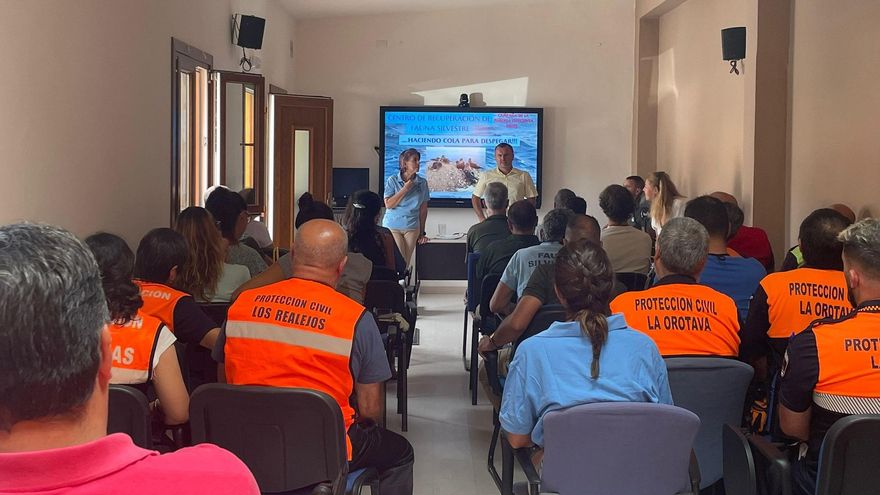
He council of Tenerife launches the now usual campaign to collect juvenile specimens of Cory’s Shearwater next day the 23rd. The initiative of the Natural Environment area, in which the Office of Environmental Participation and Volunteering collaborates, is coordinated by the La Tahonilla Wildlife Recovery Center. The objective is rescue the birds when they have an accident when they fall disoriented on their first night flight, something that usually happens when they are dazzled by the flashes of lights near the coast.
The insular director of Medio Natural, Pedro Millán, participated in the coordination meeting held this week with representatives of different groups that collaborate in the campaign. Millán values: “This is a fundamental initiative to care for Cory’s shearwaters, a seabird that faces serious conservation problems.” These include the destruction of breeding habitat, the danger of introduced predators, and fishing interaction. , plastics in the sea and, above all, light pollution. Due to this last issue, a high number of juvenile shearwaters, especially on new moon nights, lose their way towards the sea and fall to land. Then They are unable to take flight on their own. “In some cases, some of them suffer injuries that must be treated in La Tahonilla,” Millán emphasizes.
The insular director calls on citizens to collaborate in the campaign together with the rest of the administrations and entities, in which Civil Protection associations play a fundamental role. “Citizen participation is essential for the success of the rescue,” he emphasizes. In that sense, Pedro Millán appreciates the initiative of the tourist establishments in the north and south of the Island “that dim their lights to avoid dazzling the specimens.” They have gradually joined the campaign through the Association of Tourism Excellence and we want them to continue joining.”
Special protection
The Atlantic population of Cory’s shearwater (Calonectris diomedea borealis or Calonectris borealis), is included in the List of Wild Species under Special Protection Regime and in the Book Red as Vulnerable, in addition to Annex I of the Birds Directive. This protected species is one of the largest seabirds in Spain and the largest in terms of dimensions of the shearwaters in Europe. It is a migratory species, although it breeds and resides on the island coasts most of the year, specifically from February to November.
The campaign has the collaboration of the city councils, Local Police, Nature Protection Service (Seprona) of the Civil Guard, Groups of Civil Protection Volunteers, Cecopal of Santa Cruz and Emergency and Security Coordinating Center (Cecoes). Likewise, different volunteer entities collaborate such as the Association for the Development of Emergency Actions (ADAE), Anaga Emergency Aid (AEA), QRV Emergencies Canary Islands, SEO/BirdLife, Red Cross, ECAN, In Situs collective, Rumbo Zydae and Asociación Excelencia Turistica. In addition, the staff of the Insular Operational Coordination Center (Cecopin), Natural Spaces Guards and the Environmental Participation and Volunteering Office of the Cabildo also collaborate.
To do?
The insular Corporation reminds that if you locate an injured wild animal, you should not administer water, food or medicine and you should contact the La Tahonilla Wildlife Recovery Center, located at km 0.4 of the TF-24. (La Esperanza road), by calling 900 282 228. After the first talk held this week, two volunteer training days will be held next Tuesday in Adeje and the following week, on the 24th, in La Tahonilla. The Cory’s shearwater collection campaign, which celebrates its twenty-fifth edition this year, will end in mid-November.
















